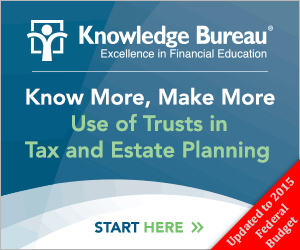Last updated: November 24 2015
Tim Cestnick on Bridging Generations with Creative Planning

At this year’s Distinguished Advisors Conference (DAC), one of Canada’s most respected tax experts, Tim Cestnick, Managing Director of Advanced Wealth Planning at Scotiabank, offered insights into the six types of capital inherent in family wealth, and into using trusts to preserve as much financial capital as possible in a transfer of wealth.
If you want to differentiate yourself from other advisors, then your conversations with clients need to be different. Taking a broader, more holistic approach than just talking about the numbers involves talking about six types of capital:
- Financial Capital: This is the money. You’re already great at these conversations.
- Spiritual Capital: The core values of the family. These will ideally be passed along to the next generation, just like the wealth. Does your money move with an explicit message to the next generation?
- Human Capital: The extent to which future generations are living positive, productive lives. This can be tougher to ensure when there is significant family wealth involved.
- Family Capital: The extent to which family members are in positive, harmonious relationships with each other. Nothing is more detrimental to financial capital than in-fighting within the family, and healthy communication is key to encouraging healthy discussions about estate planning, tax planning, succession planning, and other financial issues.
- Structural Capital: The “boxes” that contain the family’s business and financial interests, such as corporations, trusts, foundations, and more. These need to be cleaned up, simplified, and managed to get a family’s financial house in order.
- Societal Capital: The extent to which the family thinks about the community beyond the family, through foundations, strategic philanthropy, etc. How are your clients getting their kids involved on this front? This can be a great way to train and equip future generations on family principles, good governance, and investment strategies for the greater good.
When any kind of capital moves between generations, as it is set to do at unprecedented levels in coming years, there are risks and opportunities. One big risk is, of course, heavy taxation, especially for the wealthiest families. Your wealthiest clients will be hit with marginal tax rates in excess of 53%. And even families with more modest assets are faced with hefty taxes. Most Canadians are discouraged about their financial future and frequently complain about the large tax bills they pay, but most have not stepped up to the plate to save or plan.
 |
Naturally, governments at all levels like to grab money in motion and take as much of it as possible, so it’s up to you as an advisor to help structure your clients’ financial capital in as tax-efficient a way as possible. One creative way to preserve and transfer family wealth between generations is to use trusts, and they’re not just for wealthy families. The rest of Tim’s presentation focused on using “inter vivos trusts,” (which you create in your lifetime, not in your will as with testamentary trusts).
Some of the benefits of using trusts:
- Avoid heavy taxation at the highest marginal rates, as well as attribution rules that can result in a large tax bill for the settlor of the trust (the person who creates it).
- Protect assets from creditors.
- Take advantage of income splitting.
- Multiply the lifetime capital gains exemption.
- Freeze the value of assets to defer tax.
- Avoid probate fees.
- Retain privacy when transferring assets (wills, on the other hand, are public documents).
- Maintain control over your assets (particularly when choosing someone other than yourself to be the settlor).
- Create an efficient transfer of assets that functions as a living estate plan (the trust doesn’t die when you do; and you don’t have to die to transfer assets using a trust).
Cestnick also reviewed other creative ways to use trusts to minimize taxes when transferring assets to the next generation, such as an estate freeze and using life insurance in novel ways to create investment capital within a trust. These are complex strategies worth exploring in more detail because they can be highly effective for your high-net-worth clients. To learn more, check out the Knowledge Bureau course Use of Trusts in Tax and Estate Planning.
